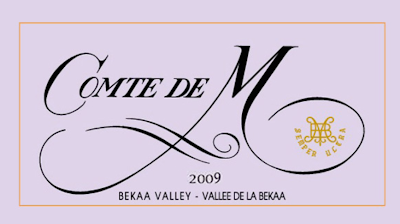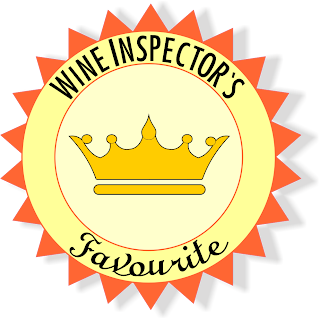
Corbières is one of Languedoc’s most famous and productive wine regions. Its wine growing tradition dates back to Roman times. At that time the great properties of the “Roman Province of Narbonne” were registered in the land registry and became the main wine suppliers to Rome. In the years 92, the Domitius Emperor mandated an edict to uproot the vineyards massively to protect the Italian winemaking. In the Middle Ages, the viticulture of Corbières (particularly Aussières) experienced a renaissance. The Church saved the vineyard for nearly 800 years, having several owners during this period: In 1065, it belonged to the Mont Laures Abbey, which was bought by the Fontfroid Abbey in 1211. During this period Aussières was in the role of a Cistercian “granary”, a farm supplying the Abbey. After the holding of the Church were confiscated in 1790, Aussières was bought at an auction by Count Daru (later Minister and Administrator of the Private Estates of Napoleon Bonaparte) and re-established the wine-making with the planting of 80 hectares of vines. Because other regions in Europe suffered from phylloxera, the vineyard of Aussières was enlarged to meet the needs of the urban populations of Northern Europe and to compensate the drop in production from other vineyards in France. The phylloxera reached the Languedoc around 1880,

but the epidemic was quickly controlled, letting the vineyard continuing to grow and giving him an advantage compared to other regions. In the 1920s and 1930s, the vineyard of Château d’Aussières covered 270 ha. In the 1950s the tide has turned. The cultivation area declined and wine-growers left the region. Today the region is gradually moving toward the production of high quality wines. In 1999 Domaines Barons de Rothschild (Lafite) bought the 550 hectare estate and started a vast rehabilitation programme. Both 167 hectares of vines have been replanted and the estate buildings have been restored. Furthermore a new winery has been installed.
The climate is a huge challenge with hot summers and few water. In spring and autumn the for the region typical Tramontane makes its way through the landscape and the vineyards. The winters are cold and dry and the soils are poor. The fact, that some owners of Bordeaux estates invested in the region, shows, that there must be plenty of potential. Even Baron Eric de Rothschild (Lafite)

recognized the “exceptional geographical location, [the] unique wine-growing site and history” of Château d’Aussières as well as its “wild, natural site of great force and beauty”. The team of Domaine d’Aussières conducted a deep analysis of the soils to be able to use the terroir as good as possible, by giving every grape the ideal conditions. In doing so the team even paid attention to specific demands like Mourvèdre’s sensitivity to stronger winds, said Eric Kohler, technical director of Domaine d’Aussières. A vertical tasting to the 10-years anniversary of Château d’Aussières was held to show the outcome of these huge efforts:
Château d’Aussières AOC 2003:
The 2003 Château d’Aussières (80% Syrah, 20% Grenache) was in a surprisingly good condition. No brown colour in the glass. The nose is still fresh. After 40% of the wine matured in barrels, the aromas are not fruit driven, but highly barrel-influenced. Flavours of mocha and caramel dominate fine cherry and plum aromas. Even on the palate it does not seem to be too old. Fruitier than the nose with cherry, plum and caramel. Full bodied, very soft and a long aftertaste. Should be drunken now.
Rating: 87
Château d’Aussières AOC 2005:
40% of the 2005 Château d’Aussières (70% Syrah, 20% Grenache, 10% Mourvèdre) matured in barrels (like the 2003 vintage) and reached its peak. Ruby in colour. In the nose a bit more passive than the 2003 vintage. The bouquet is dirty-styled with flavours of truffles, cigarres and textiles. On the palate soft structured and also dirty-styled with aromas of plum, mocha and caramel in between. Full bodied, very expressive on the palate and a long aftertaste. Not as barrel-influenced as the 2003 Château d’Aussières. Will be at its best for the next years.
Rating: 89 points.
Château d’Aussières AOC 2008:
The 2008 Château d’Aussières (58% Syrah, 10% Grenache, 32% Mourvèdre) appears ruby in the glass. In nose and mouth harmonious and complex with plum, lemon grass, iron and caramel, sustained by lush and soft tannins. At a glance the higher amount of Mourvèdre is noticeable. Full bodied, good density and a long aftertaste. Now an enjoyment, but even better in a few years. Good buy!
Rating: 90
Château d’Aussières AOC 2010:
Besides the 2008 vintage, the 2010 Château d’Aussières (65% Syrah, 18% Mourvèdre, 7% Grenache, 10% Carignan) is the vertical’s second highlight. After 40% of the wine matured in barrels, the bouquet is surprisingly open already and displays intense notes of raspberry, lemon grass and caramel. In the mouth it appears super soft and well-balanced with perfect integrated, clutching tannins. Aromas of plum, raspberry and iron beguile the palate. Compared to the 2008 vintage more red fruits. Full bodied, good density and a long finish. Will be drinkable for more than a decade. Best buy!
Rating: 91
Château d’Aussières AOC 2011:
Like the 2005 Château d’Aussières, the 2011 vintage (66% Syrah, 10% Mourvèdre, 14% Grenache and 10% Carignan) is dirtier in the nose than the other representatives. Slightly broad flavours of lemon grass, plum and iron, intermixed with vegetable notes. On the palate not as dense and tense as the stronger vintages 2005, 2008 and 2010. Notes of plum, raspberry and iron. Medium to full bodied, very soft, good balance and a long aftertaste. Compared to the other vintages more dark fruits. Needs a few years to open completely.
Rating: 88
At the end all the wines show the same style. It is the aspiration of Eric Kohler and Aymeric Izards to produce wines, which are ready to drink and as balanced as possible, right after they have been released. They accomplished their goal not only in good, but also in weaker vintages by exploiting the terroir at a maximum. You should keep an eye on Domaine d’Aussières, because it is one of the region’s best wineries already. With the ageing of the vines, the quality of Domaine d’Aussières’ wines can even reach higher levels.
***************

Corbières ist eine der bekanntesten und produktivsten Regionen des Languedoc-Roussillon und besitzt eine Weinbautradition, die bis auf die Römerzeit zurückzuführen ist. Die großen Güter der Provinz Narbonensis wurden damals in die römische Weinbergrolle eingetragen und gehörten damit zu den wichtigsten Lieferanten Roms. Im Jahr 92 ordnete Kaiser Domitius jedoch ein Edikt an, das für die Rodung der Weinberge sorgte, um den italienischen Weinbau zu schützen. Erst im Mittelalter durchlebte der Weinbau eine Renaissance in Corbières (speziell: Aussières). Die Kirche setzte sich für die Bewahrung des Weinberges ein und machte Aussières für beinahe 800 Jahre zum Klostergut, wobei es mehrmals den Besitzer wechselte: 1065 gelangte es in den Besitz des Klosters Mont Laures. Dieses wurde wiederrum 1211 dem Kloster Fontfroide zugeschlagen. In dieser Zeit diente Aussières dem Kloster nur als Betrieb zur Versorgung des Klosters. Nachdem 1790 die Kirchengüter beschlagnahmt wurden, ersteigerte Graf Daru (später Minister und Verwalter der Privatgüter Napoléon Bonapartes) das Gut und führte auf einer Fläche von 80 Hektar den

Weinbau wieder ein. Sorgte die Reblauskatastrophe zunächst für Ausfälle in anderen Regionen und für eine Ausdehnung der Weinberge, so erreichte sie 1880 auch das Languedoc. Doch die Plage wurde schnell überwunden, sodass der Weinberg prosperierte. In den 20ern und 30ern des 20.Jahrhunderts wurden in Aussières 270 Hektar bewirtschaftet. Das Blatt wendete sich in den 50er Jahren, als die Rebflächen schrumpften und Winzer abwanderten. Heutzutage bemüht man sich zunehmend, Qualitätsweine herzustellen. 1999 kaufte die Domaine Baron de Rothschild (Lafite) das 550 Hektar große Gut auf und sanierte es grundlegend. Neben umfassenden Neuanpflanzungen auf einer Fläche von 167 Hektar restaurierte man auch mehrere Gebäude und richtete zudem einen neuen Weinkeller ein.
Das Klima stellt eine große Herausforderung dar. Die Sommer sind sehr heiß, Wasser Mangelware. Im Frühling und im Herbst bläst der für die Region berühmte Tramontane durch die Landschaft. Die Winter sind meist kalt und trocken. Auch die Böden machen es den ansässigen Winzern nicht gerade leichter. Sie sind recht karg.
Dennoch schlummert in der Region viel Potenzial, das in den letzten Jahren einige bordelaiser Châteaubesitzer entdeckt und in der Folge hinein investiert haben. So auch Baron Eric Lafite Rothschild, der dies mit der „ungewöhnlichen geographischen Lage, der hervorragenden Weinberge und seiner [Corbières, Anm. d. Autors] bewegten Geschichte“, die den Ort große Kraft und Schönheit ausstrahlen lassen, begründet. Um das Terroir bestmöglich zu nutzen, führte das Team der Domaine d‘Aussières eine umfassende Analyse der Böden durch, um in der Lage zu sein, jeder Rebsorte ihren bestmöglichen Standort zur Verfügung stellen zu können. Dabei beachtete man auch Faktoren wie beispielsweise die Windempfindlichkeit der Mourvèdre Reben, so Eric Kohler, der Technische Direktor der Domaine d‘Aussières. Ob sich diese Bemühungen gelohnt haben, zeigte eine Vertikalverkostung zum 10-jährigen Jubiläum des ersten Jahrganges des Château d’Aussières:
Château d’Aussières AOC 2003:
Der 2003er Château D’Aussières (80% Syrah, 20% Grenache) zeigte sich überraschend gut. Im Glas zeigte er keinerlei Brauntöne. Die Nase ist immer noch recht frisch, allerdings weniger frucht-, sondern stärker fassbetont, nachdem 40% des Weins in Fässern reifte. Düfte nach Mokka und Karamell dominieren die zarten Kirsch- und Pflaumenaromen. Auch im Mund hält sich die Alterung in Grenzen. Fruchtiger als in der Nase mit Kirsche, Pflaume und Karamell. Voller Körper, sehr weich und rund sowie ein langer Abgang. Sollte jetzt allerdings getrunken werden.
WineInspector-Wertung: 87
Château d’Aussières AOC 2005:
Die 2005er Château D’Aussières (70% Syrah, 20% Grenache, 10% Mourvèdre) reifte wie schon der 2003er Jahrgang zu 40% in Fässern und dürfte sich gerade auf dem Höhepunkt befinden. Rubinrote Farbe. Ein etwas passiveres Bouquet. Etwas schmutziger in der Nase. Düfte nach Trüffel, Zigarre und Textilien. Im Mund weich strukturiert und ebenfalls schmutzig mit Aromen von Pflaume, Mokka und Karamell innerhalb des schmutzigen Gesamtbildes. Voller Körper, sehr expressiv und ein langer Abgang. Etwas weniger fassbetont als der 2003er Jahrgang. Der wird noch mehrere Jahre Spaß machen.
WineInspector-Wertung: 89
Château d’Aussières AOC 2008:
Der 2008er Château D’Aussières (58% Syrah, 10% Grenache, 32% Mourvèdre) zeigt sich rubinrot im Glas. In Nase und Mund ausbalanciert und komplex mit Pflaume, Zitronengras, Eisen und Karamell, gestützt von einem satten, aber weichen Tanningerüst. Man merkt sofort den erhöhten Mourvèdreanteil. Voller Körper, gute Dichte und ein langer Abgang. Jetzt schon ein Genuss, aber noch nicht mal auf seinem Höhepunkt.
WineInspector-Wertung: 90*
Château d’Aussières AOC 2010:
Der 2010er Château D’Aussières (65% Syrah, 18% Mourvèdre, 7% Grenache, 10% Carignan) ist das zweite Highlight der Vertikale. Nachdem 40% des Weins in Fässern reiften, zeigt sich das Bouquet jetzt schon überraschend offen und intensiv mit Noten nach Himbeere, Zitronengras und Karamell. Im Mund ist er unglaublich weich und ausbalanciert mit perfekt integrierten, packenden Tanninen. Aromen von Pflaume, Himbeere und Eisen betören den Gaumen. Etwas rotfruchtiger als der 2008er. Voller Körper, gute Dichte und ein langes Finale. Wird mehr als ein Jahrzehnt lagerfähig sein.
WineInspector-Wertung: 91**
Château d’Aussières AOC 2011:
Der 2011er Jahrgang (66% Syrah, 10% Mourvèdre, 14% Grenache und 10% Carignan) präsentiert sich wieder etwas schmutziger in der Nase. Etwas breite Aromen von Zitronengras, Pflaume und Eisen sowie vegetabile Noten. Im Mund nicht ganz so dicht und spannungsreich wie die stärken Jahrgänge 2005, 2008 und 2010, Noten von Pflaume, Himbeere und Eisen. Mittlerer bis voller Körper, sehr weich, gute Balance und ein langer Abgang. Dunkelfruchtiger als die anderen Jahrgänge. Braucht noch etwas Zeit.
WineInspector-Wertung: 88
Insgesamt zeigten alle Weine einen klaren Stil. Das Ziel Eric Kohlers und Aymeric Izards besteht darin, Weine herzustellen, die nach der Abfüllung sofort zugänglich und möglichst ausbalanciert sind. Dies gelang ihnen allerdings nicht nur in guten, sondern auch in schwierigen Jahrgängen, in denen sie das ihnen zur Verfügung stehende Terroir bestmöglich nutzten. Die Entwicklung der Domaine d’Aussières sollte man im Auge behalten, da diese bereits jetzt zu den besten Weingütern der Region zählt und mit zunehmendem Alter der Reben sogar noch bessere Ergebnisse erzielen kann.



















































